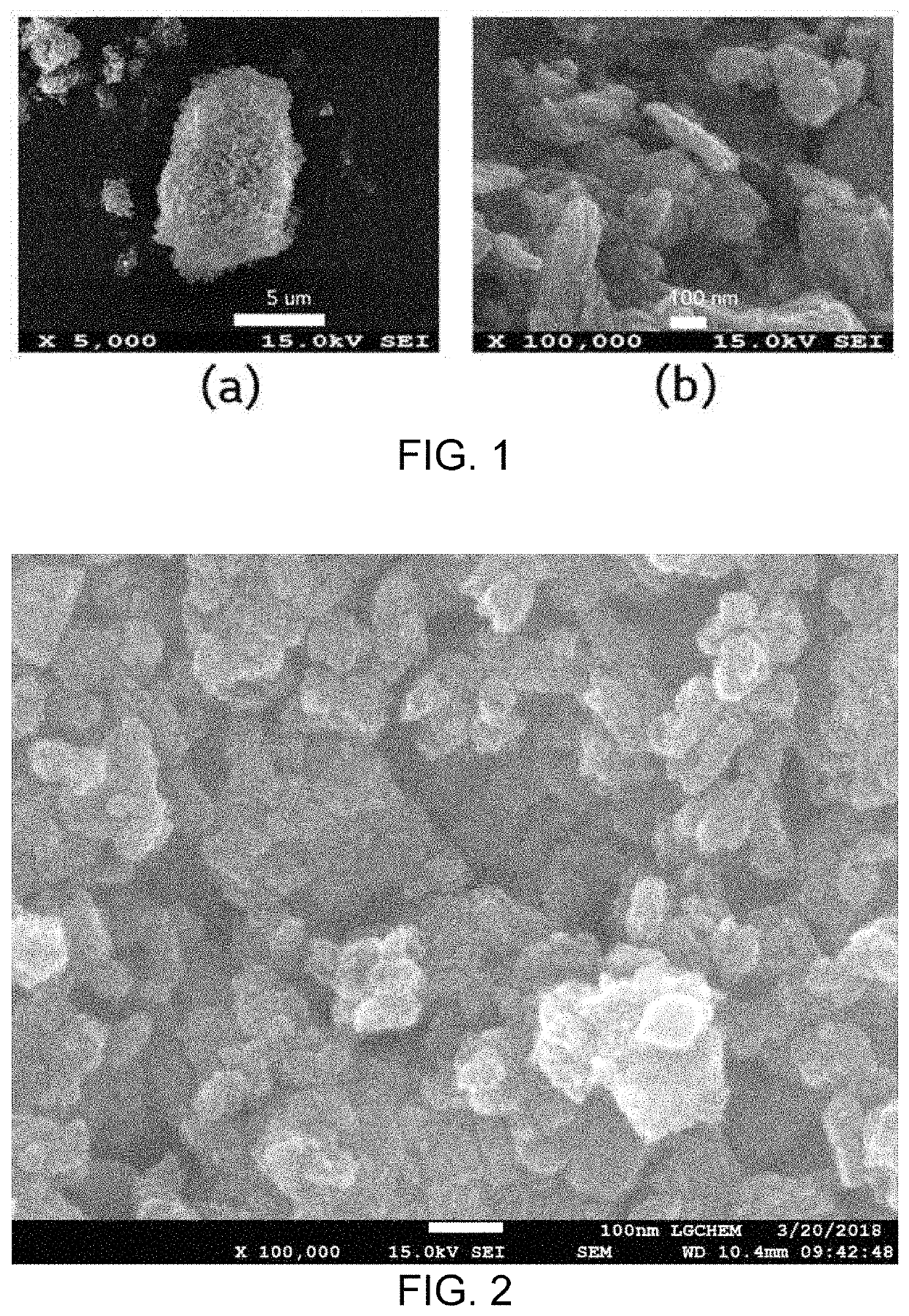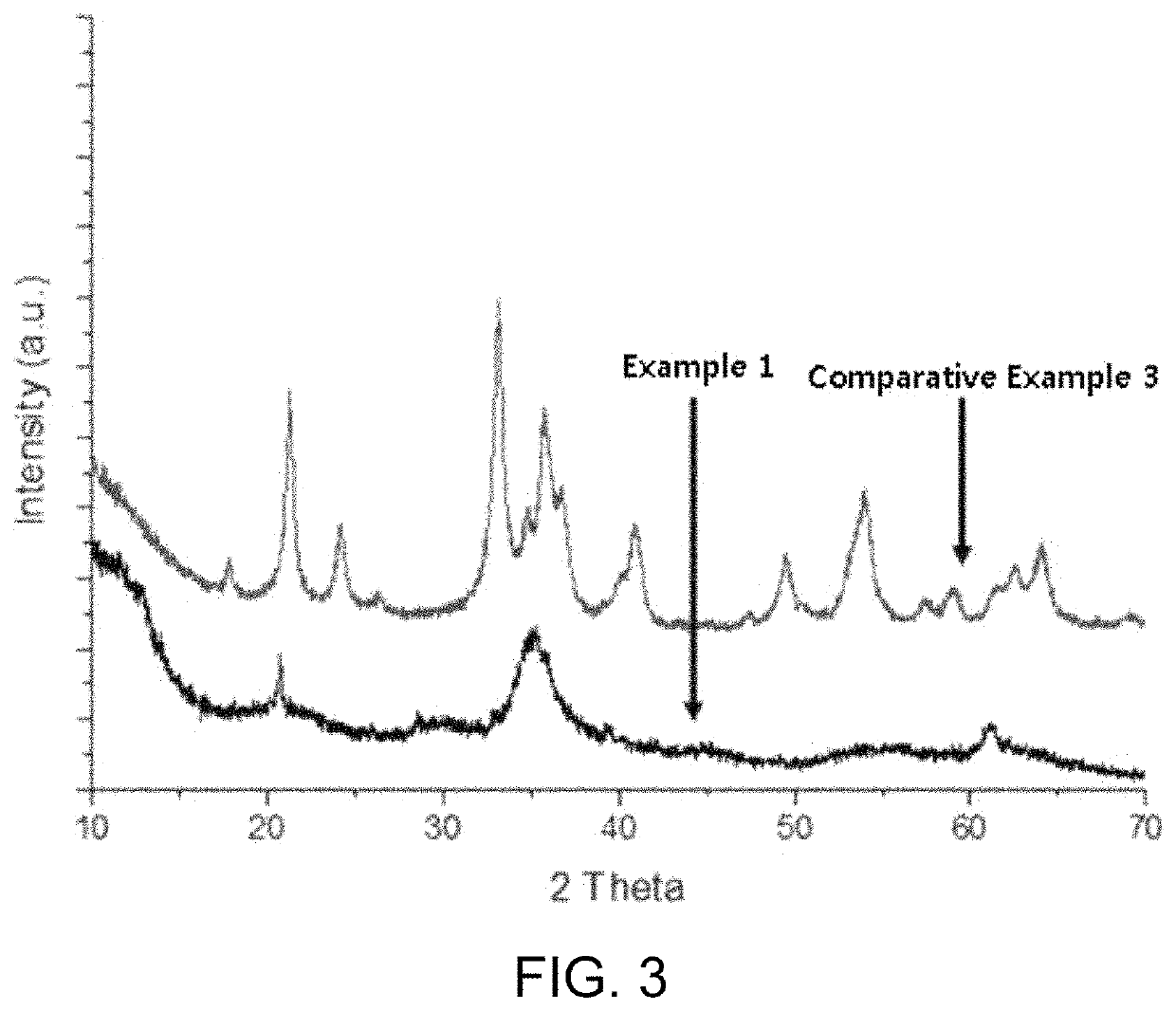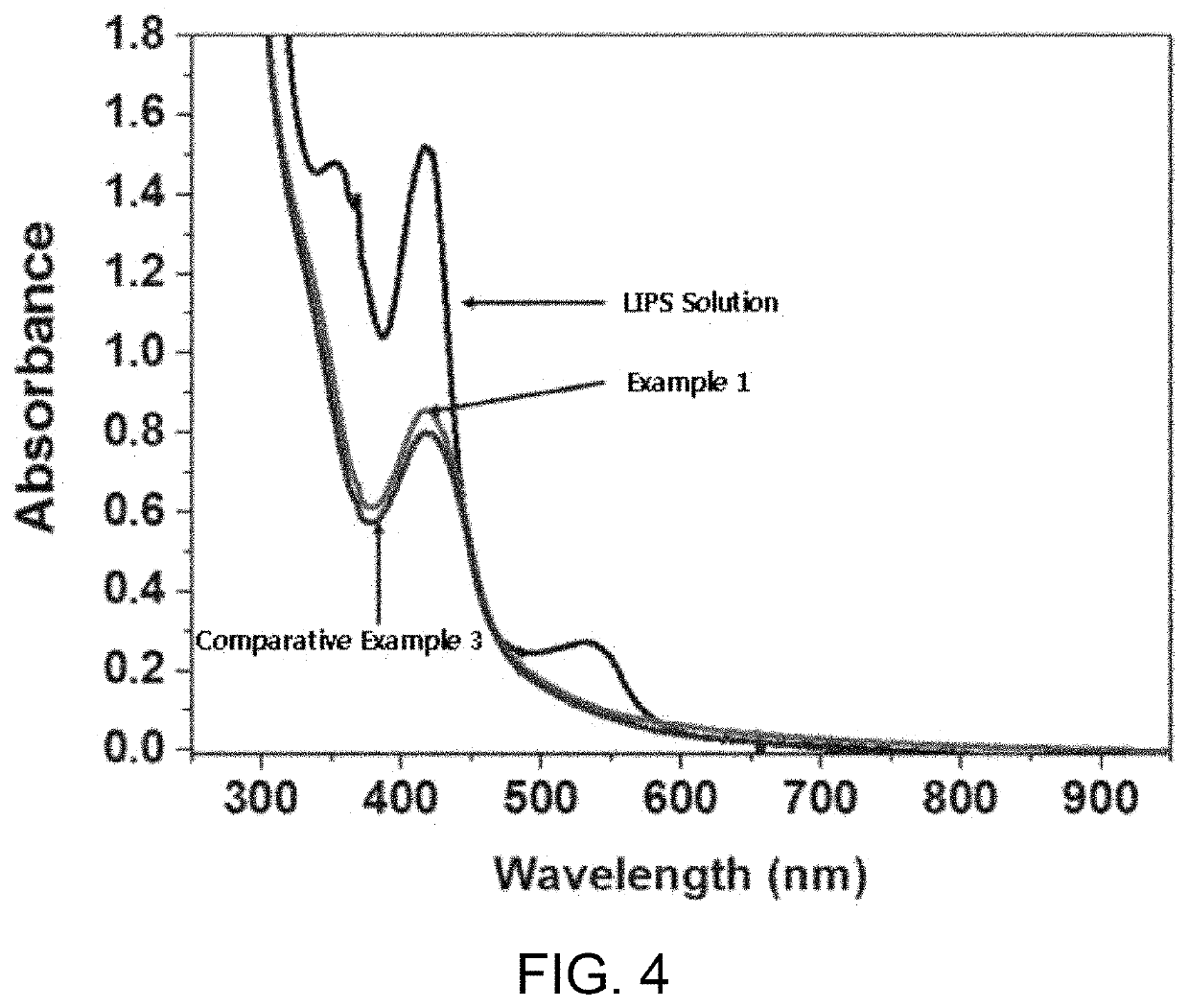Method for preparing iron nitrate oxyhydroxide, cathode containing iron nitrate oxyhydroxide prepared thereby for lithium secondary battery, and lithium secondary battery comprising same
a technology of iron nitrate and oxyhydroxide, which is applied in the direction of positive electrodes, electrochemical generators, cell components, etc., can solve the problems of short charging time, and limited capacity of lithium ion secondary batteries, so as to increase the reactivity of positive electrodes, suppress side reactions, and high purity
- Summary
- Abstract
- Description
- Claims
- Application Information
AI Technical Summary
Benefits of technology
Problems solved by technology
Method used
Image
Examples
experimental example 1
oscope (SEM) Analysis
[0100]SEM analysis (S-4800 FE-SEM of Hitachi Company) was performed for the iron oxyhydroxynitrate (FeO(NO3)x(OH)1-x) prepared in Example 1 and the particles (α-Fe2O3+α-FeOOH) prepared in Comparative Example 3 above. FIG. 1 shows the results of SEM analysis of the iron oxyhydroxynitrate prepared in Example 1 ((a) in FIG. 1 is a magnification of 5 k, and (b) in FIG. 1 is a magnification of 100 k), and FIG. 2 is a graph showing the results of SEM analysis of the particles prepared in Comparative Example 3. As a result of SEM analysis at a magnification of 100 k, the particles having particle diameter of 50 to 200 nm were identified as shown in FIGS. 1 and 2, respectively.
Experimental Example 2: X-Ray Diffraction (XRD) Analysis
[0101]XRD analysis (D4 Endeavor from Bruker Company) was performed on the materials prepared, respectively, in Example 1 and Comparative Example 3. FIG. 3 shows the results of X-ray diffraction analysis of the iron oxyhydroxynitrate prepared ...
experimental example 3
Polysulfide Adsorption Capacity of Iron Oxyhydroxynitrate
[0103]The lithium polysulfide adsorption capacities of the materials prepared, respectively, in Example 1 and Comparative Example 3 were confirmed through ultraviolet absorbance analysis (UV, Agilent 8453 UV-visible spectrophotometer from Agilent Company), and the results are shown in FIG. 4.
[0104]As shown in FIG. 4, it was confirmed in the wavelength range of 300 to 950 nm that the materials prepared, respectively, in Example 1 and Comparative Example 3 of the present invention absorbed the lithium polysulfide to reduce the intensity of ultraviolet absorbance, and thus it was found that the iron oxyhydroxynitrate according to the present invention adsorbs the lithium polysulfide well.
experimental example 4
ing Capacity of Lithium Secondary Battery
[0105]In order to test the discharging capacities of the lithium secondary batteries (accurately, the lithium-sulfur batteries) according to the type of the positive electrode material, the discharging capacities were measured after constructing the positive electrodes and the negative electrodes for the lithium secondary batteries as shown in Table 1 below.
[0106]The positive electrode of Experimental Example 1 was constructed to comprise the sulfur-carbon composites and the iron oxyhydroxynitrate of Example 1, the positive electrode of Comparative Experimental Example 1 was constructed to comprise the sulfur-carbon composites, and the positive electrode of Comparative Experimental Example 2 was constructed to comprise the sulfur-carbon composites and iron oxyhydroxynitrate prepared in Comparative Example 1. The positive electrode of Comparative Experimental Example 3 was constructed to comprise the sulfur-carbon composites and iron oxyhydrox...
PUM
| Property | Measurement | Unit |
|---|---|---|
| particle diameter | aaaaa | aaaaa |
| temperature | aaaaa | aaaaa |
| discharging voltage | aaaaa | aaaaa |
Abstract
Description
Claims
Application Information
 Login to View More
Login to View More - R&D
- Intellectual Property
- Life Sciences
- Materials
- Tech Scout
- Unparalleled Data Quality
- Higher Quality Content
- 60% Fewer Hallucinations
Browse by: Latest US Patents, China's latest patents, Technical Efficacy Thesaurus, Application Domain, Technology Topic, Popular Technical Reports.
© 2025 PatSnap. All rights reserved.Legal|Privacy policy|Modern Slavery Act Transparency Statement|Sitemap|About US| Contact US: help@patsnap.com



